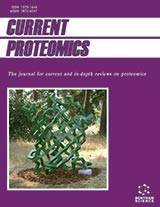Abstract
Drug discovery is a complex process that includes the identification of biological targets as well as the identification of leads that aim at altering or inhibiting the function of a particular target. The budding yeast Saccharomyces cerevisiae has long been recognized as a valuable model organism for studies of eukaryotic cells since many of the basic cellular processes between yeast and humans are highly conserved. In this review, we highlight emerging yeast-based functional genomic and proteomic technologies that are advancing the utility of yeast as a model organism in the drug-discovery process. These approaches include the utilization of yeast deletion strain collection, synthetic genetic array combined with chemical genomics, variations of the yeast two-hybrid system, yeast biosensor assay, and protein microarrays. Although still at an early stage, these technologies show promise as novel and useful methods for development of target-specific therapeutic approaches.
Keywords: drug discovery, yeast two hybrid system, genomics, proteomics
Current Proteomics
Title: Drug Discovery Using Yeast as a Model System: A Functional Genomic and Proteomic View
Volume: 2 Issue: 1
Author(s): Daniel Auerbach, Anthony Arnoldo, Boris Bogdan, Michael Fetchko and Igor Stagljar
Affiliation:
Keywords: drug discovery, yeast two hybrid system, genomics, proteomics
Abstract: Drug discovery is a complex process that includes the identification of biological targets as well as the identification of leads that aim at altering or inhibiting the function of a particular target. The budding yeast Saccharomyces cerevisiae has long been recognized as a valuable model organism for studies of eukaryotic cells since many of the basic cellular processes between yeast and humans are highly conserved. In this review, we highlight emerging yeast-based functional genomic and proteomic technologies that are advancing the utility of yeast as a model organism in the drug-discovery process. These approaches include the utilization of yeast deletion strain collection, synthetic genetic array combined with chemical genomics, variations of the yeast two-hybrid system, yeast biosensor assay, and protein microarrays. Although still at an early stage, these technologies show promise as novel and useful methods for development of target-specific therapeutic approaches.
Export Options
About this article
Cite this article as:
Auerbach Daniel, Arnoldo Anthony, Bogdan Boris, Fetchko Michael and Stagljar Igor, Drug Discovery Using Yeast as a Model System: A Functional Genomic and Proteomic View, Current Proteomics 2005; 2 (1) . https://dx.doi.org/10.2174/1570164053507790
| DOI https://dx.doi.org/10.2174/1570164053507790 |
Print ISSN 1570-1646 |
| Publisher Name Bentham Science Publisher |
Online ISSN 1875-6247 |
 27
27
- Author Guidelines
- Bentham Author Support Services (BASS)
- Graphical Abstracts
- Fabricating and Stating False Information
- Research Misconduct
- Post Publication Discussions and Corrections
- Publishing Ethics and Rectitude
- Increase Visibility of Your Article
- Archiving Policies
- Peer Review Workflow
- Order Your Article Before Print
- Promote Your Article
- Manuscript Transfer Facility
- Editorial Policies
- Allegations from Whistleblowers
Related Articles
-
Epigenetics in Ocular Diseases
Current Genomics Secondary Radiation-Induced Bone Tumours Demonstrate a High Degree of Genomic Instability Predictive of a Poor Prognosis
Current Genomics Recent Progress and Related Patents on the Applications of Bone Marrow-Derived Stem/Progenitor Cells in Regenerative Medicine and Cancer Therapies
Recent Patents on Regenerative Medicine E2F1-Mediated Apoptosis as a Target of Cancer Therapy
Current Molecular Pharmacology Telomere Maintenance Mechanisms in Cancer: Clinical Implications
Current Pharmaceutical Design Current Perspectives on Novel Drug Delivery Systems and Approaches for Management of Cervical Cancer: A Comprehensive Review
Current Drug Targets The Rb Pathway and Cancer Therapeutics
Current Drug Targets Novel Therapies Against Aggressive and Recurrent Epithelial Cancers by Molecular Targeting Tumor- and Metastasis-Initiating Cells and Their Progenies
Anti-Cancer Agents in Medicinal Chemistry An Integrative Systems Analysis of High-grade Glioma Cell Lines: TLRs, Wnt, BRCA1, Netrins, STXBP1 and MDH1 Provide Putative Molecular Targets for Therapeutic Intervention
Current Pharmacogenomics and Personalized Medicine Peptide Aptamers: Specific Inhibitors of Protein Function
Current Molecular Medicine RNA Interference as Therapeutics for Hepatocellular Carcinoma
Recent Patents on Anti-Cancer Drug Discovery DNA Methylation: A Possible Target for Current and Future Studies on Cancer?
Epigenetic Diagnosis & Therapy (Discontinued) Therapeutic Application of Natural Medicine Monomers in Cancer Treatment
Current Medicinal Chemistry The Interest of Folic Acid in Targeted Photodynamic Therapy
Current Medicinal Chemistry Targeting of NF-kappaB Signaling Pathway, other Signaling Pathways and Epigenetics in Therapy of Multiple Myeloma
Cardiovascular & Hematological Disorders-Drug Targets Complete Response in 5 Out of 38 Patients with Advanced Hepatocellular Carcinoma Treated with Stem Cell Differentiation Stage Factors: Case Reports from a Single Centre
Current Pharmaceutical Biotechnology Synthetic 2-Methoxyestradiol Derivatives: Structure-Activity Relationships
Current Medicinal Chemistry New Molecular Targets of Anticancer Therapy – Current Status and Perspectives
Current Medicinal Chemistry Cyclin-Dependent Kinase 4/6 (Cdk4/6) Inhibitors: Perspectives in Cancer Therapy and Imaging
Mini-Reviews in Medicinal Chemistry SCAP/SREBPs are Central Players in Lipid Metabolism and Novel Metabolic Targets in Cancer Therapy
Current Topics in Medicinal Chemistry























